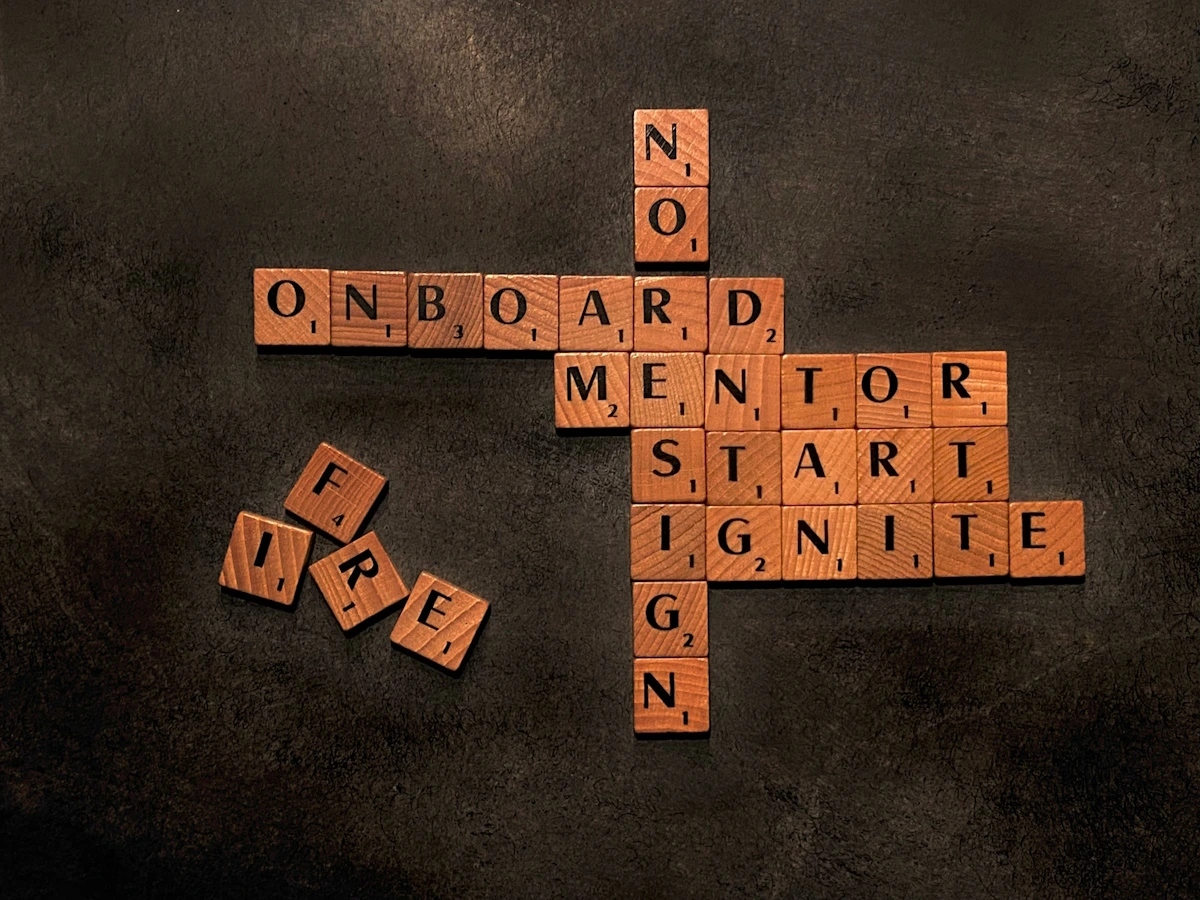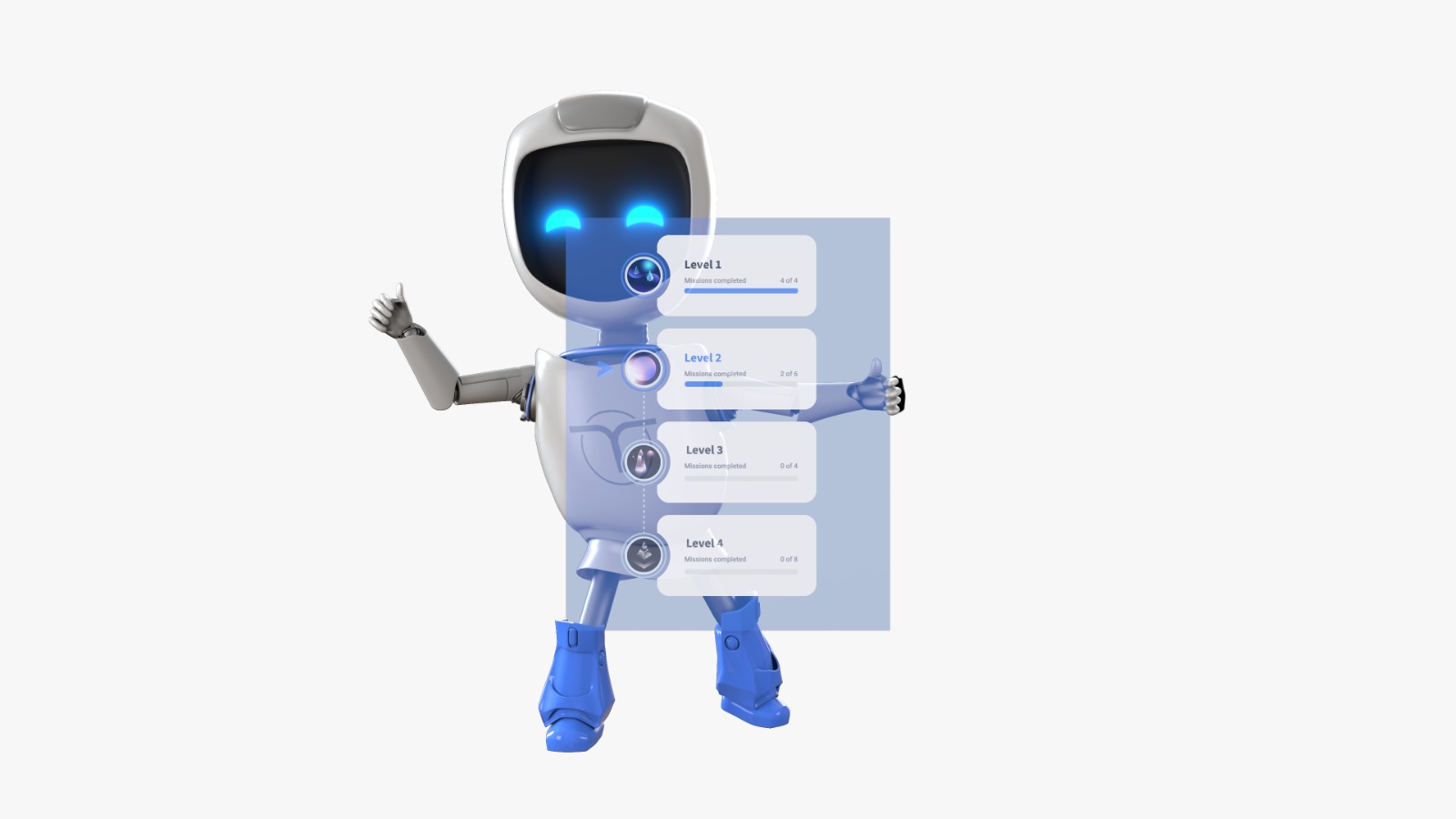Onboarding is the first impression a new employee has of your organization, and it can profoundly influence their long-term success and retention. If you’re not convinced yet, the latest studies say it all:
- A solid onboarding process can boost employee retention by 52%.
- 69% of employees who experience effective onboarding will stay with the company for at least 3 years.
- Proper onboarding leads to 18 times higher employee engagement.
- A successful onboarding journey can double your revenue.
- Employee productivity can jump by 60%.
But what exactly does great onboarding look like? What challenges might you face, and what should you expect? We break it all down, step by step, in the article below.
1. Onboarding Process in 2024: Redefining the Basics
Onboarding is the process through which new employees are integrated into the team and familiarized with the company culture, procedures, and available resources. Its goal is to make the transition as smooth and enjoyable as possible so that new hires feel welcomed and ready to confidently take on their roles. In 2024, onboarding is no longer about handing over a boring manual – it’s about creating an interactive and motivating experience that reassures new employees they’ve made the right choice and encourages them to contribute with enthusiasm and creativity. From filling out paperwork to getting familiar with procedures and tools, onboarding needs to cover it all.
The Evolution of Onboarding Practices
Over the past few decades, onboarding practices have evolved significantly, moving from traditional, paperwork-heavy approaches to modern, interactive solutions. What used to be a standardized, often uninspiring process filled with formal sessions and pre-defined courses has transformed into a personalized experience, enhanced by digital tools like microlearning platforms and onboarding apps. These modern methods allow employees to learn at their own pace and access necessary materials exactly when needed, making integration smoother and more engaging.
Moreover, today’s onboarding strategies emphasize early integration into the company culture and building trust from day one. Interactive activities like team-building sessions, mentoring, and continuous feedback are now key components of the process. Onboarding is no longer just about transmitting information—it’s about involving new employees in the team’s life, helping them feel like a vital part of the organization from the very beginning.
The Remote and Hybrid Work Shift: New Challenges, New Opportunities
The rise of remote and hybrid work models has introduced new challenges – and opportunities – into the onboarding process, reshaping how companies integrate new hires. In a hybrid environment, where employees split their time between home and the office, onboarding must adapt to both scenarios. This means that onboarding materials and sessions need to be accessible online, enabling effective interaction between new employees and their teams, no matter where they are. According to a Harvard Business Review study, new employees who spent one or two days a month with their managers were 5% more satisfied with their onboarding experience.
On the other hand, those who spent most of their first 90 days at the office didn’t report significant additional value. Remote work demands a fresh look at onboarding strategies to ensure a seamless and effective experience. Companies are now developing programs that include virtual interactive sessions, digital resources, and online social events to build relationships, foster trust, and promote collaboration in a virtual setting.
2. Industry-Specific Onboarding Challenges: Is Your Process Setting You Up for Failure?
Onboarding can vary between industries, each facing its own unique challenges. In the tech sector, for instance, rapidly integrating new employees into a constantly evolving and technologically complex environment can be daunting. In healthcare, rigorous certification and compliance processes add an extra layer of complexity, requiring careful integration to meet strict regulations. In retail, accelerating the learning process for seasonal workers is a constant challenge. Each industry requires a tailored onboarding approach to address its specific needs, ensuring new hires integrate efficiently and contribute quickly to the organization’s success.
Technology Sector: Keeping Pace with Innovation
In the tech sector, onboarding faces unique challenges due to the rapid pace of innovation. New hires must quickly adapt to the latest tools and platforms, which demands an accelerated integration process focused on continuous learning. With the rise of cybersecurity threats, thorough training in cybersecurity has become essential to safeguarding company data. In this context, ongoing professional development is essential to keep employees up-to-date with industry changes and ensure they can effectively adapt to new technologies.
Healthcare: Precision and Compassion in Onboarding
In the healthcare field, onboarding must focus on strict regulatory compliance to guarantee patient safety and legal adherence. Training on patient data confidentiality is critical for protecting sensitive information. Additionally, emotional support plays a vital role, given the psychological impact of working in this sector. Thus, onboarding goes beyond technical training, incorporating essential components for emotional support and adherence to regulatory standards.
Finance: Balancing Ethics and Efficiency
For employees in the financial sector, onboarding needs to carefully address financial regulations and compliance requirements. It’s imperative that new hires are well-informed about the high ethical standards fundamental to this industry. Familiarity with financial technologies and integrated systems is also necessary to ensure operational efficiency. Therefore, onboarding must integrate both regulatory and ethical aspects, alongside training in relevant technologies.
Retail: Elevating Customer Experience through Onboarding
In retail, onboarding focuses on excellent customer service standards. Effective inventory management is vital for daily store operations, and understanding digital tools and e-commerce platforms is increasingly important. Consequently, onboarding should blend training in customer service, inventory management, and digital technologies to support a superior shopping experience and efficient operations.
Manufacturing: Safety, Efficiency, and Advanced Technology
In the manufacturing industry, onboarding must prioritize adherence to safety protocols to prevent workplace accidents, while training in efficiency principles and lean manufacturing can significantly boost productivity. Knowledge of advanced production technologies is also beneficial, as these can optimize manufacturing processes. Therefore, onboarding should integrate training in safety, efficiency, and advanced technologies to ensure operational success and workplace safety.
3. One-Size-Fits-All, Your Biggest Mistake: Customize for Different Types of Employees
Onboarding is no longer a one-size-fits-all process. It’s not just about saying “welcome” and giving a quick office tour – it’s about customizing the experience to fit each employee, whether they work in a traditional office or remotely. Understanding that onboarding isn’t a “one-size-fits-all” endeavor is key for the success of any organization.
Full-time vs. Part-time Employees
Approach onboarding a full-time employee like you’re preparing someone for a master’s degree. Think about all the details – not just technical training, but also immersing them in the company culture. For example, when you bring a full-time employee on board, make sure they participate in detailed orientation sessions, have a mentor assigned, and get opportunities to explore various departments. You’ll spend time introducing them to the company’s values, internal processes, and give them enough time to settle in and find their place.
On the other hand, for a part-time employee, your onboarding approach should be more focused. You’re delivering a streamlined onboarding experience. Imagine you only have a few hours to prepare them for the job. You’ll focus on giving them the information they need to start working effectively. Instead of overwhelming them with unnecessary details, make sure they quickly understand their tasks and how to execute them without complications.
Remote vs. In-office Employees
When onboarding a remote employee, you need to become a master of digital organization. Imagine your new colleague is thousands of miles away and can’t join in on kitchen chats or impromptu office meetings. You’ll need to create an onboarding experience that replicates these interactions as closely as possible. Organize your Zoom training sessions with the same care as if you were presenting to the entire team. Use collaborative online tools to provide them with a work environment that’s just as accessible and interactive as the office. For example, schedule informal online meetings to build the kind of team relationships that usually form over coffee.
For an in-office employee, onboarding will focus more on direct interactions. Remember how much the first smile you receive when joining a new team matters? Here, you can leverage the advantage of face-to-face meetings. Introduce them to colleagues in person, show them around the office, and maybe even organize a welcome lunch. The atmosphere and dynamics of the office will play a key role in their integration, and you’ll be able to offer immediate, hands-on support.
Entry-level vs. Experienced Professionals
When onboarding an entry-level employee, think of them as a newcomer entering a completely new world. They’ll need a detailed, step-by-step guide to navigate all aspects of the job. Focus your efforts on providing continuous support, perhaps through a mentorship program where they can ask questions and receive constant feedback. You’ll find that you may need to explain even the simplest concepts, ensuring nothing is left misunderstood.
On the other hand, if you’re dealing with an experienced professional, approach onboarding like a software update. They don’t need to learn everything from scratch – rather, they need to familiarize themselves with the specifics of your company. Emphasize quick integration into the team and present them with specific information to help them adapt their experience to the new context. Instead of offering extensive training in their field, focus on internal processes and organizational culture.
Contractors and Freelancers
When onboarding a contractor, efficiency is key. Time is limited, and they’re here to fulfill a specific task. Start your onboarding process by clarifying objectives – present all the essential details, from deadlines to available resources. You’ll need to integrate the contractor into the team quickly, giving them access to all the information and tools they need to deliver what you’ve asked for, without wasting any time.
With a freelancer, your approach should be even more flexible. It’s like collaborating with an external expert who’s here to add value in a short amount of time. You’ll provide a basic guide, quick access to essential resources, and then let them get to work. Instead of involving them in all team processes, you’ll allow them to work independently, ensuring they have everything they need to deliver high-quality results.
4. Department-Specific Onboarding: Nailing the Essentials
HR Department
- Policies: HR is the gatekeeper when it comes to ensuring new hires understand the company’s policies and procedures. Typically, new employees receive an Employee Handbook, either digital or physical, filled with information on the code of conduct, confidentiality policies, and security protocols. But don’t just hand it over – make it engaging. Pair the handbook with interactive training sessions where they can ask questions and clarify doubts. Using online platforms for training and quick quizzes can also be a smart move to ensure key points stick.
- Company Culture: Getting new employees to truly grasp and embody the company culture is non-negotiable. HR should set up intro sessions that dive into the company’s values, mission, and real-life examples of how these play out in daily activities. Think of organizing meet-and-greets with team members or company leaders, offering newcomers a taste of the culture in action. A buddy system works wonders here—pairing newbies with seasoned mentors to help them get their footing and feel at home.
- Conflict Resolution: Teaching new hires how to handle conflict and develop interpersonal skills is a cornerstone of the HR onboarding process. Picture this: a one-day workshop where new employees engage in role-playing scenarios to tackle potential workplace conflicts and learn effective resolution techniques. Continuous feedback sessions and role-playing workshops will leave them feeling equipped to handle whatever comes their way.
IT Department
- Systems Access: IT needs to ensure that new employees have swift access to all the necessary systems and tools. Before day one, set up access to all applications and internal systems so that, when the time comes, they can log in and hit the ground running. Each new hire should receive a detailed document with all the necessary passwords and initial settings, and IT should be on standby for any needed adjustments.
- Cybersecurity Training: With cyber threats on the rise, rigorous cybersecurity training is a must for every new employee. This could involve a mandatory online course covering security best practices, like password management and phishing detection, followed by a test to ensure they’ve grasped the essentials. Access to sensitive systems should be contingent on passing this test.
- Software Tools: In many companies, IT onboarding also includes specific training on essential software tools. New hires might gain access to a video tutorial library covering all the applications they’ll be using. For something more complex, like a CRM system, consider organizing hands-on sessions led by an IT specialist, followed by real-time Q&A opportunities.
Sales and Marketing
- Product Knowledge: For sales and marketing, it’s all about deep product knowledge. New hires should dive into product boot camps where they can learn every detail about the company’s offerings, from key features to unique benefits, and even get some hands-on experience. Engaging with the product themselves will help them understand and communicate its value more effectively.
- Customer Relationship Management (CRM): Successful customer relationship management starts with proper CRM training. New hires should spend time with existing sales teams to learn how to manage customer interactions, document communications, and analyze CRM data to maximize sales potential.
- Market Strategies: Marketing newcomers need to get a strong grip on market strategies. This might involve participating in a SWOT analysis (Strengths, Weaknesses, Opportunities, Threats) and engaging in strategic planning sessions where they learn how the company positions its products against competitors.
Operations
- Workflow Processes: Onboarding in operations should start with a deep dive into workflow processes. New employees should receive detailed diagrams of the workflow, and mentors should guide them step by step through each stage. Shadowing experienced colleagues can also be invaluable for understanding operational nuances.
- Quality Control: Quality is king in operations, so onboarding must emphasize control standards. New hires should be trained in multi-level review processes, ensuring they can detect and correct errors before they reach the customer.
- Efficiency Improvement: Continuous process optimization is key. During onboarding, teach new hires the techniques and methodologies that drive efficiency improvements, like Lean or Six Sigma principles.
Finance
- Financial Systems: The finance department relies on a variety of systems and software for financial management. New hires should receive specific training on these platforms to ensure they can navigate them with ease.
- Regulatory Compliance: Compliance is non-negotiable in finance. Onboarding should include detailed instruction on industry-specific legal requirements, such as data protection regulations and tax compliance.
- Ethical Standards: Financial integrity is vital. New employees should undergo ethics training, complete with case studies and practical examples of how to manage potential conflicts of interest or fraud.
5. Best Practices You Can’t Afford to Ignore
The best onboarding practices aren’t just about ticking off tasks from a checklist; they’re about creating a captivating experience that turns a new hire into a valuable team member from day one. The process should be so well thought out that new colleagues wonder why they didn’t join your company sooner. A well-structured onboarding not only speeds up integration but also lays the foundation for a long-term relationship built on trust and mutual understanding. Here’s what you need to focus on:
- Communicate before day one, making the new hire feel welcomed and informed even before they step through the door.
- Clearly define the role and expectations to avoid any surprises.
- Introduce them to the company culture, helping them understand and adopt the organization’s values and culture from the very first days.
- Provide a mentor or buddy, someone who can guide them and answer any question, no matter how small.
- Structure training sessions without overwhelming the employee, giving information in doses, not all at once—so they can absorb and apply it effectively.
- Schedule feedback meetings.
- Create opportunities for interaction to help them integrate and build relationships.
Ensure quick access to tools and information; everything should be readily available. - Evaluate the onboarding process after a few months.
6. The Onboarding Checklist: Skipping a Step Could Cost You Talent
After the grueling process of finding and hiring the right candidate, onboarding should be the crown jewel of your efforts. The process itself needs to be carefully planned, well-structured, and, if possible, a bit more exciting than reading a user manual. Let’s break down each stage:
Pre-Onboarding: Building Some Anticipation
This is where the magic begins, even before the new hire steps into the office (or opens their laptop if we’re talking remote work).
What to do:
- Send a friendly email – maybe with some GIFs and emojis – letting them know how excited you are that they’re joining the team. Don’t hold back on the compliments.
- Send all necessary paperwork for them to sign before the first day to avoid any bureaucratic hassles when you should be celebrating.
- Surprise them with a welcome kit (think branded t-shirt, a motivational mug, a fancy notebook – it’s the little things that count). Bonus points if you throw in some snacks.
The First Day: An Avalanche of Information
You know that feeling when you arrive at an event where you don’t know anyone and wonder if you’ve made the right choice? That’s what the first day is like for a new employee. It’s your job to make it as non-terrifying as possible and add a little flair. The first part of onboarding is actually orientation – the new employee’s first real contact with their new environment. And remember, first impressions matter.
What to do:
- Instead of just showing them where the kitchen is and wishing them luck, introduce them to the team. Make them feel like they’ve just joined the Champions League – a quick round of intros with colleagues, maybe a coffee with their direct team, and a few inside jokes to help them integrate quickly.
- Set up a casual meeting with the team (croissants and coffee, perhaps?). After all, they need to get to know the people they’ll be sharing Slack jokes with.
- Make sure their laptop, email accounts, and other systems are set up before the day begins. This will save you from the long, bored look of an employee waiting to configure their own password.
The First Week: From “Who Are You?” to “Welcome to the Family”
This is the week of adaptation, and your new colleague needs all the support they can get.
What to do:
- It’s time for technical and functional training. But don’t overload them on day one. Spread the training throughout the week so they have time to digest the information. Include some hands-on activities – learning by doing.
- Gradually, the employee should start getting into the groove. Give them small but meaningful tasks to make them feel like they’re already contributing. Something light, but enough to make them say, “Hey, I’ve already done something cool!”
- Schedule short check-ins with their mentor (if they have one) or direct manager to ensure they’re comfortable and can ask any questions – even those that start with, “Sorry to ask, but…”
The First Month: Settling Into the Scene
Month one is all about consolidation. By now, they’re starting to know who argues over coffee, where the shortcuts in the CRM are, and maybe even where to find the best pizza in the neighborhood.
What to do:
- At the end of the month, provide feedback – keep it constructive and positive. Even if things aren’t perfect, it’s important for the new hire to feel like they’re on the right track.
- After a month, it’s time to set some clearer goals for the next few months. Don’t be overly ambitious, but establish some tangible milestones to keep them motivated.
- Schedule a casual meeting (maybe a lunch or coffee) to check in on how they’re feeling. It doesn’t all have to be “strictly business” – a relaxed chat can reveal more than formal feedback.
The First Quarter: From Newbie to Key Contributor
After the first three months, your new hire should be fully integrated. Not only do they know all the shortcuts in the internal software, but they also have some good stories about team-building adventures.
What to do:
- Start conducting a more serious evaluation. By the three-month mark, you should have a pretty clear idea if the employee is a good fit for the role and if they’re meeting expectations.
- It’s also a great time to discuss development opportunities. Maybe they could attend some advanced training sessions or develop complementary skills. Show them that you see a long-term future for them within the company.
- Surprise them with a small gesture – a team lunch to celebrate their first three months or a public acknowledgment of their achievements. These little tokens of appreciation can work wonders.
7. Ignoring Technology in Onboarding Will Cripple Your New Hires
Technology has revolutionized how we approach onboarding, making it faster, more efficient, and even more engaging for new hires. Here’s how.
Onboarding Software Solutions
Dedicated software solutions streamline the onboarding process and eliminate the chaos of paperwork. Everything, from completing documents to tracking employee progress, happens in one clear and organized place. Instead of spending hours buried in paperwork, you can focus on truly integrating your new employee into the team.
AI-Driven Personalized Onboarding Experiences
Artificial intelligence can turn your onboarding process into a personalized experience tailored to each need or industry. An AI-powered microlearning platform like Code of Talent is a game-changer, helping managers and L&D teams create customized, engaging, and practical on-the-job training. It harnesses peer-to-peer learning and gamification to support sales and retail reps in their result-generating activities, driving performance, market readiness, and customer impact.
Mobile-Friendly Onboarding Apps
Mobile-friendly onboarding apps are a must in today’s world. They allow employees to access materials, complete tasks, and sign documents from anywhere, right from their phones. This flexibility enhances comfort and efficiency, giving them the freedom to complete their onboarding whenever and wherever they like.
8. Measuring Onboarding Success: Proving the ROI
After investing time and resources into your onboarding program, you need to track its success and understand its impact on the business. To do this, you must establish a set of key performance indicators (KPIs) to measure the effectiveness of your investment.
Key Performance Indicators (KPIs) to Track:
- Time to productivity: measure how quickly new hires become productive.
- Employee retention rates: track how well new hires are sticking around.
- Engagement levels: use surveys and feedback to gauge how engaged your new employees are.
- Performance metrics: assess their performance against the goals set for them.
- Retention rates and time-to-productivity metrics: monitor these to ensure your onboarding process is driving long-term value.
Don’t forget to collect feedback from your new employees and conduct face-to-face interviews to identify areas for improvement. Why? Because improvement is a continuous process, where you adapt to industry changes as well as to the needs and expectations of your employees.
9. Tackling Common Onboarding Challenges
Adapting to the diversity of work styles is a challenge that requires finesse. In the hybrid era, L&D professionals must strike the perfect balance between the needs of in-office and remote employees. It’s about delivering an equally powerful and connected onboarding experience to every employee, regardless of where they work. Simply offering a Zoom link and some documents won’t cut it; you need to create a digital experience that’s on par with the physical one, making everyone feel like part of the team from day one.
Keeping new employees engaged during the initial phase isn’t easy either. New hires come in with enthusiasm, but also a fair share of anxiety. They’re bombarded with information, trying to understand how everything works. The key here is to design an onboarding process that’s engaging without being overwhelming. It’s not just about passing on information, but about gradually building motivation and a sense of belonging.
As technology advances, L&D teams need to keep pace. Integrating new technologies into onboarding can be the difference between a smooth transition and a rocky one. Whether it’s online learning platforms or performance management systems, the key is to implement them effectively and make them accessible, so they become a real support for employees.
Onboarding also needs to be legally airtight. Compliance with regulations, especially in international or multicultural contexts, is essential. Companies must ensure that every new hire understands and adheres to the rules, without turning the process into a bureaucratic maze.
Onboarding doesn’t end after the first month. Companies that invest in continuous learning and professional development for their employees see long-term benefits. Provide ongoing resources and learning opportunities, keeping employees motivated and competent.
Finally, measure the effectiveness of onboarding. Without clear evaluation, it’s hard to know what’s working and what isn’t. KPIs become the go-to tools for analyzing the impact of onboarding on retention, performance, and employee satisfaction. Every step needs to be measured and adjusted to ensure the smoothest and most successful integration possible.
10. Future Trends in Onboarding: What’s Next?
We’re living in an era where technology and new generations are rewriting the rules. The future of onboarding is shaping up to be an exciting journey where personalized experiences, artificial intelligence, and virtual reality become the norm, not the exception. It’s time to prepare for an onboarding process that not only integrates quickly but also delights. Let’s see what the future has in store:
Hyper-Personalized Onboarding
Say goodbye to one-size-fits-all solutions and off-the-shelf training programs. The future is all about personalized experiences, tailored at almost a molecular level, where you can offer training specifically crafted to meet both the company’s and the employee’s needs. Let’s not forget that everyone has their own learning pace and style. Artificial intelligence will play a key role here in developing innovations and personalizing the experience.
Virtual and Augmented Reality
VR and AR are set to revolutionize how new hires interact with the work environment, offering them an immersive experience from a distance. Want to tour the factory without leaving your home? Now it’s possible.
Gamified Onboarding
Why not make onboarding fun? The future brings gamification trainings that turn the integration process into an engaging game. With points, rewards, and challenges, new employees will learn faster and be more motivated to get involved.
Focus on Wellbeing
In a world where burnout is becoming increasingly common, the future of onboarding will include wellbeing components from day one. Integration means more than just learning a job; it means feeling good where you are. Mindfulness sessions, mental health programs, and resources for work-life balance will be integral parts of the experience.
Continuous Onboarding, Upskilling, and Reskilling
Onboarding won’t stop after the first few months. The future introduces the concept of continuous onboarding, where employees receive ongoing support and new resources as they evolve in their roles or as new technologies emerge that they need to master for their work.
Wrapping It Up: Onboarding That Leaves a Mark
Onboarding isn’t just an administrative formality. It’s the moment you showcase your culture, values, and commitment to your new hires’ growth. A well-crafted onboarding process that blends cutting-edge technology with genuine human connection lays the foundation for long-term loyalty. Every step matters – from the pre-onboarding that sets expectations, to cultural integration that makes them feel at home, and even to future trends that promise to revolutionize the whole experience.
So, if you want to build a top-notch team, start with an unforgettable onboarding experience. Check out our microlearning platform and see it for yourself.
Photo credit: Unsplash





